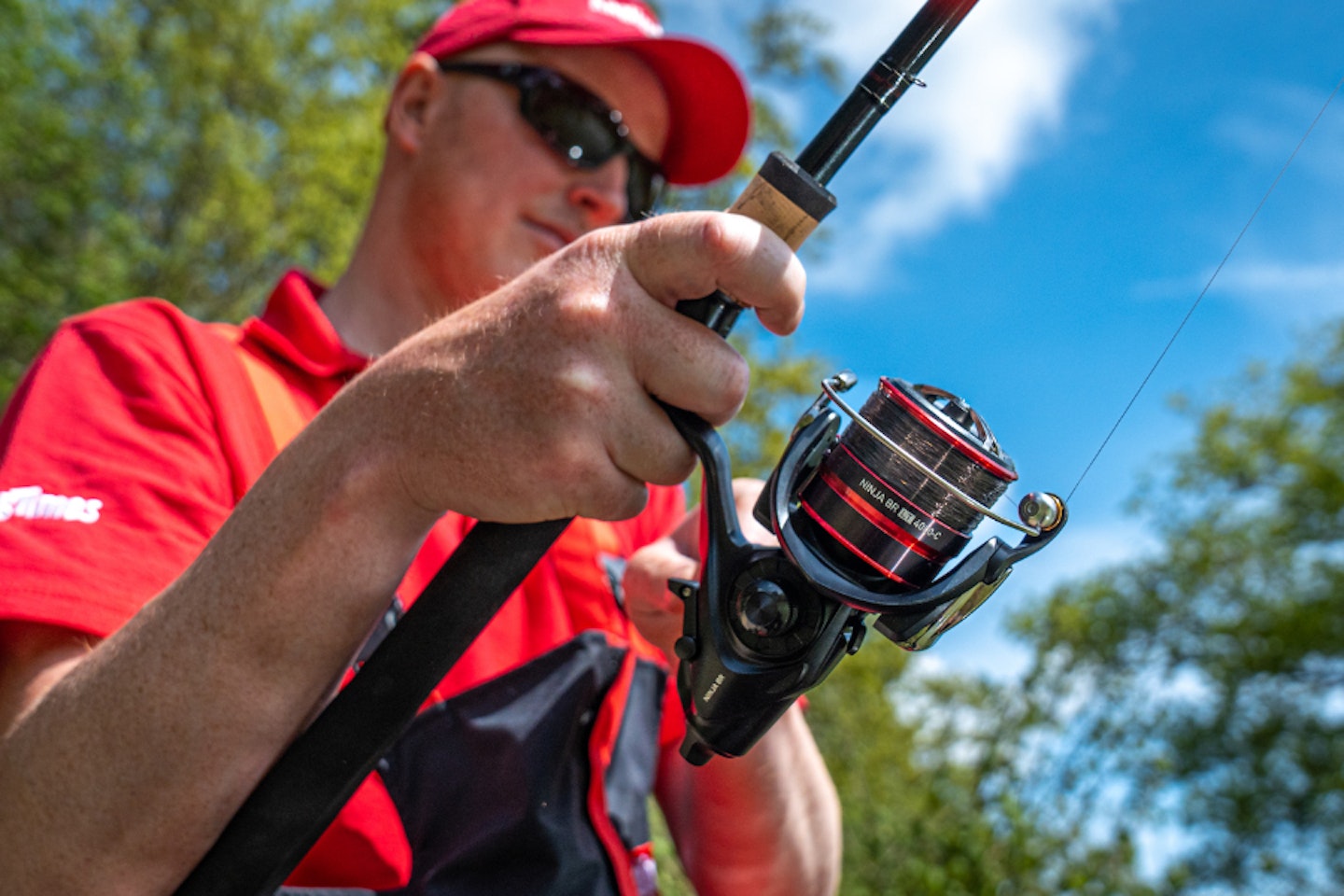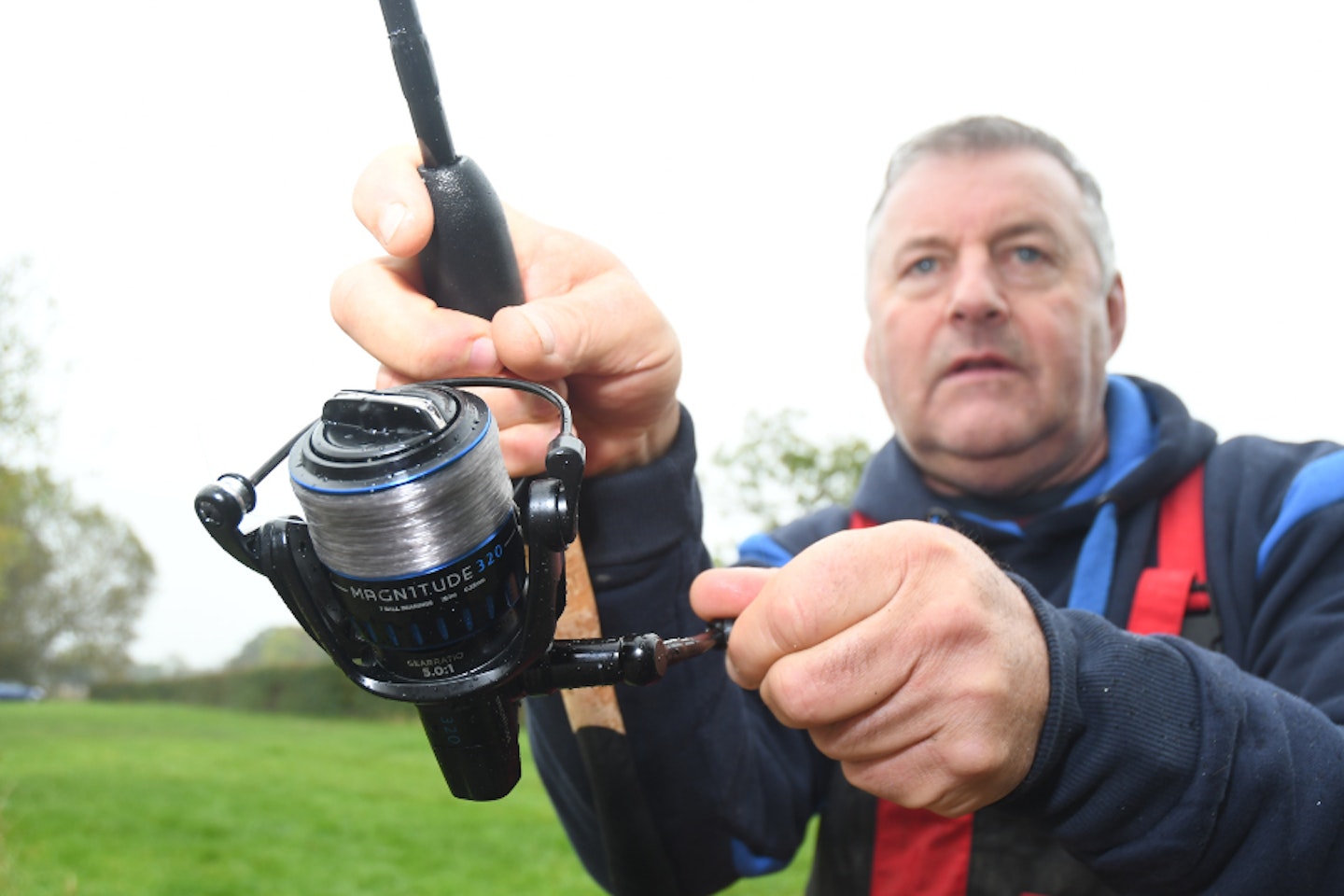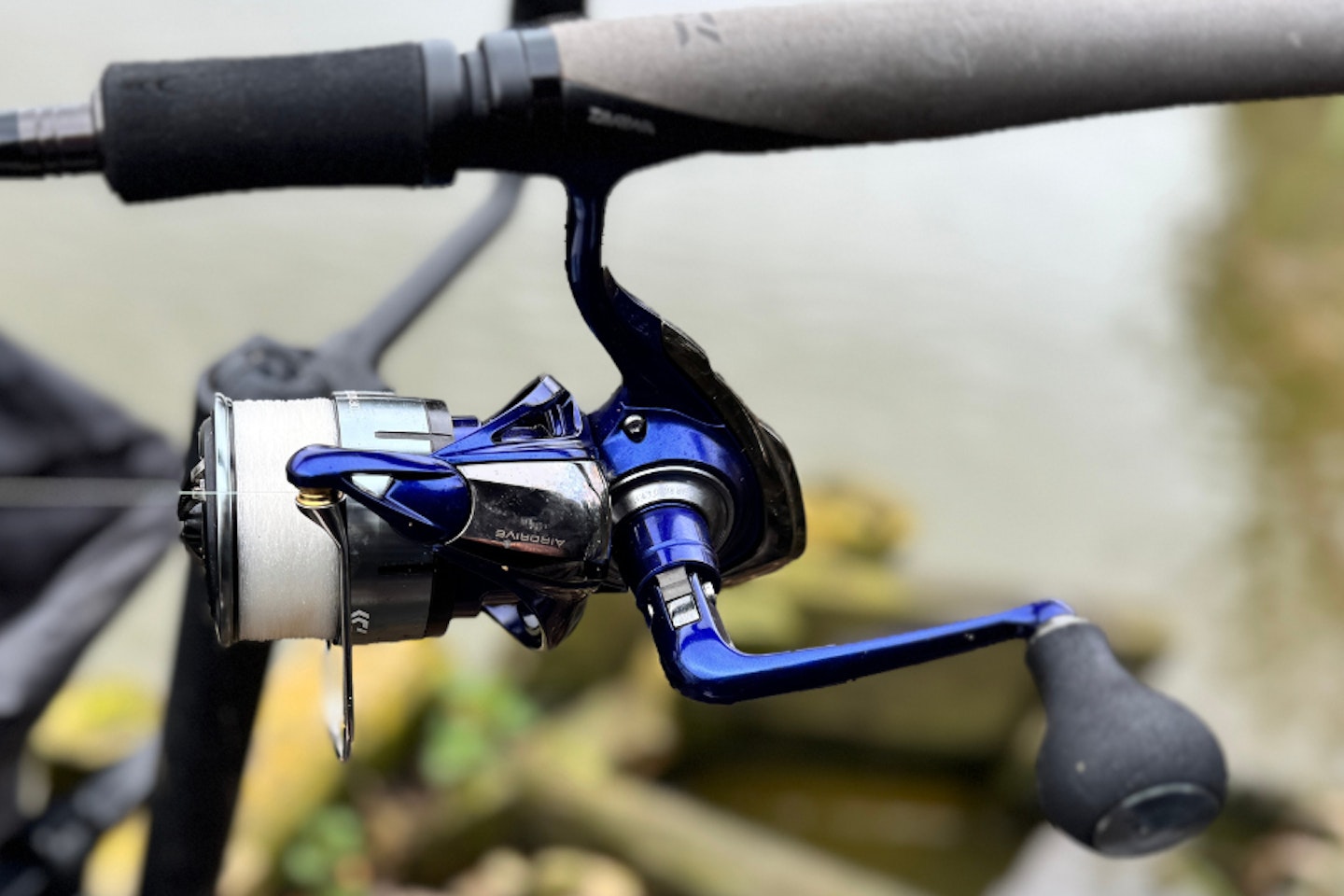Fishing reels come in all manner of shapes, colours and sizes, which can make deciding which is best for your budget a very difficult task indeed. The reel market has a lot of confusing terms and numbers. However, once you understand the basics, your choice depends mainly on the type of fishing you want to do.
The size of a reel is usually identified by a number, the higher the number, the bigger the reel. This is useful to know, as although a 10,000-sized carp fishing reel may be good for fishing on smaller lakes, it likely won't have the spool size and therefore casting capability of a 'big pit' carp fishing reel, for example.
Best fishing reels at a glance
The best float fishing reel or the best feeder fishing reel isn't just dictated by size, however. A good, powerful and reliable drag is essential in the best reels for barbel fishing or carp angling and the smoothness of a reel is also important, as is how the line lays onto the spool. If these crucial elements are flawed, the casting process can be severely impacted. Be sure to pick wisely to avoid buying twice. In this article, we have constructed a shortlist which hopefully has something for all angler's needs.
How we test the best fishing reels
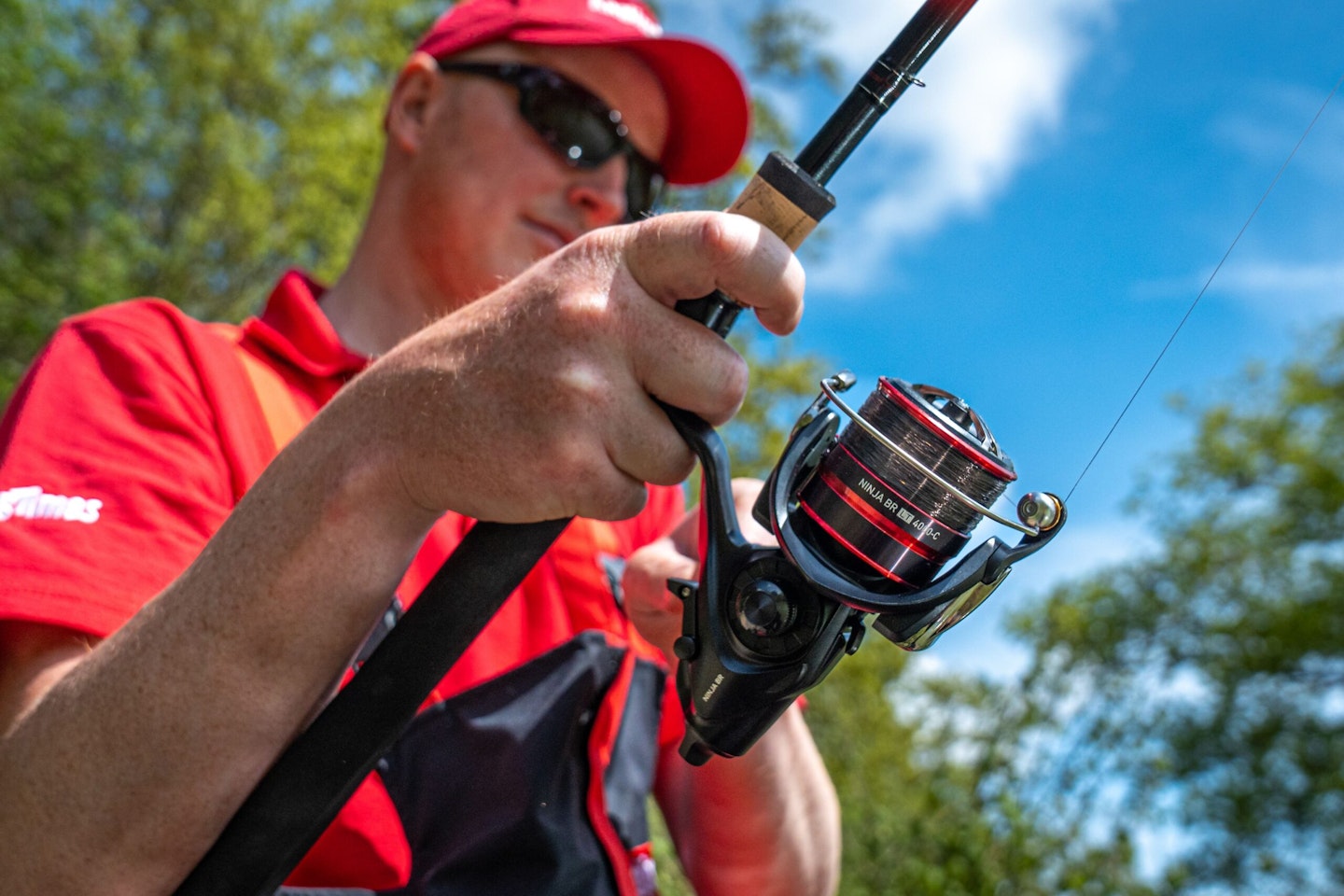
These coarse fishing reels were tested by experienced members of the Angling times team. We have been using and abusing reels for decades and have probably used most, if not all of them during our time on the bank, so we know the best from the rest!
Team members, Mark Sawyer, Jonathan Longden and Dan Webb have been testing a variety of fishing reels, under both match and pleasure fishing scenarios, to ensure they perform and get a thorough testing.
Our decision process of what makes the best fishing reels takes into account various factors including price point, cranking power, build quality and usability to ensure we can give you the best advice on factors that will make a 'reel' different to your angling, rather than confuse you with a load of specifications.
The following list includes a mixture of our favourites for all match and coarse fishing to help find a reliable reel for you. Find out how we test our gear, HERE.
Best Fishing Reel (2024 National Angling Awards)
www.total-fishing-tackle.com
I waited a long time to get my grubby mitts on these reels, and not just because they are shiny and new; and let’s face it every angler loves a bit of shiny new tackle. These reels are a breath of fresh air, and have been specifically designed as a UK coarse fishing reel, so you can be sure they are up to the task of anything the UK fishing scene can throw at it.
That doesn't mean they can't be used when spinning for species like bass, but if you want the most from this reel, you buy it to cope with the demands of modern day feeder and float fishing on commercials and running water. Packed with some superb unique features, it is designed to be as comfortable and useable as a reel can be, and will aid to improve your angling ability.As a fishing enthusiast and tackle tester, I have been getting to grips with these reels for a few weeks now, putting them through their paces in all manners of angling situations, it is fair to say they are seriously impressive...
Matrix has concentrated on the features that are most important for UK anglers, including the distance of the spool from the rod, allowing for precise finger dab casting action and instant access to the anti-reverse switch.
Featuring an ultra-light magnesium body, carbon-reinforced rotor, CNC aluminium drive gear, triple sealed body, line-friendly clip, multi-disc precision front drag, and a sleek one-piece bail-arm, they are available in 3000 and 4000 sizes. Designed specifically for UK match and coarse anglers in 3000 and 4000 sizes.
Pros
- Screw-in handle has zero wobble and makes storage easy
- Immaculate line lay straight out of the box
Cons
- Be careful not to overfill if spooling up with braid due to the taper-free spool lip
| 10 + 1 ball bearings | |
| 5:1:1 gear ratio | |
| Ultra lightweight magnesium body | |
| Carbon reinforced rotor | |
| Multi-disc drag system | |
| Easy reach spool | |
| Line capacity: 3000, 150m 0.22mm | 4000, 150m 0.24mm | |
| weight: 291g | |
| 79cm and 86cm retrieval rate per turn |
We were really impressed with the original Ninja reels, which are super smart, practical and really versatile little reels. These new Ninja reels have seen slight upgrades to their cranking power and sizes to cater for the more serious match and coarse anglers. The Ninja Match and Feeder is great for doing exactly what it says, for any sort of feeder fishing the bigger 4012 reel is superb.
Its smooth and effortless winding capabilities, coupled with the slightly larger spool to improve casting distances, just make them a really fantastic reel and for less than £70 it offers remarkable value for money. The 3012 is a great all-round reel, and is one of the best float fishing reels we have used. But they are capable of much more we have used them for catching barbel and chub on the float, feeder fishing on local commercials and even as travel reels for using abroad when lure fishing for some hard fighting, saltwater species.
There really is nothing we have found the reel to be incapable of.If you want a versatile and durable reel, then the Daiwa Ninja Match and Feeder reels take some beating in their price bracket and we still aren't sure if Daiwa have mistakenly priced these up, as they feel and perform far above what they cost.
Pros
- Incredibly smooth and reliable
- Supplied with a spare spool
Cons
- Not the biggest spool sizes
Preston’s Extremity reels have been the go-to for feeder anglers who fish at range. The new SD versions bring meaningful upgrades without losing the core attributes that made the originals so popular.
The biggest change is the new Speed Drag system. A simple half-turn takes the drag from locked up to free running, which is ideal to stop your rod disappearing after a savage take or when you’re playing powerful fish on lighter hooklengths. It gives you instant control, crucial for dealing with those last-minute lunges under the rod tip.
Still featuring the worm drive system which delivers smooth and consistent power when cranking in heavy feeders from distance. It delivers the power you want when fishing big waters or dealing with deep venues and long chucks.
The SD range comes in two sizes 520 and 620, these cover everything from standard commercial feeder work to serious distance fishing. Both feel solid, cast cleanly, and balance well on modern feeder rods.
Pros
- Lee Kerry's go to reel.
- Updated drag with faster adjustment
Cons
- Bail arm is a little heavy.
The opportunity arose to run the rule over Shimano’s Nasci in the three most popular body sizes – 2500, 3000 and 4000. The test did obviously include three rods, all the same model but at lengths of 10ft, 11ft and 12ft. It seemed an ideal way to match them to the reels, as we’d use them on the bank.
So, let’s now take a closer look at the smart grey and chrome-liveried Nasci reels. All three have a fairly fast 5:1.1 gear ratio that retrieves around 73cm (29ins) of line per handle crank. All three were a little faster than I’m used to, but using a short Method feeder hooklength there were absolutely no issues with spin-ups and the like.
They run smoothly, silently and completely wobble-free thanks to high-quality Hagane gearing and a 5+1 bearing assembly. With plenty of winding power, and zero play between the handle and the gearing, they respond instantly when the handle is engaged.
They weigh around 8.5oz which, in my book, is quite acceptable for both float and feeder fishing, and they slot painlessly into their seatings on the rods and are forgotten about once in situ, just as it should be!
The Nasci does not have an anti-reverse facility. I asked Shimano why this is so, and the company gave me these two main reasons why it stepped away from having this feature on most of its spinning reels: “Not adding the anti-reverse lever improves the waterproofing quality of our reels. It is easy to imagine that the lever section allows water and dirt to slip into the reel over time, potentially damaging or hampering its performance."
So there you have it. For me, playing a fish straight off the clutch is something I do anyway – I can backwind if I have to – but so precise are front drag clutch systems these days that there seems little point. The absence of an anti-reverse didn’t hamper my enjoyment of the Nasci reels, or their performance, one bit.
YOU CAN WATCH MARKS FULL REVIEW OF THE SHIMANO NASCI HERE...
Pros
- Very smooth
- Lightweight design
- Effortless winding, ideal for lure fishing or float fishing
Cons
- The exclusion of anti-reverse might not appeal to everyone
Best fishing reels under £50
The Daiwa 23 Matchman Reel is a very impressive item of tackle, it's really hard to believe you will get the reel and change from £50. The range covers three sizes, including a 2500 model, which is compact and great for lure fishing or light float work, it is also great for kids or beginners.
The 3000 size is the most versatile in the range, it is the perfect size to allow you to fish normal wagglers and balance a light rod when fishing for silvers or trotting a float. It also still has the cranking power for pellet waggler fishing or chucking a Method Feeder out catching big carp.
If you were just looking for a feeder reel to target the rivers after barbel and chub, or take it to chuck a long way on your local commercial, the 4000 is definitely the size to go for, as it just has that extra power you'll need. It also has a retrieval rate of 95cm per turn, so you'll have those feeders back in and back out in no time.
Pros
- A reel that performs way above its price tag.
- Easy control when trotting.
Cons
- Handle knob is a little clunky.
Best Budget Fishing Reel

www.total-fishing-tackle.com
A quality budget fishing reel under £50 is hard to find. But the Shimano Catana FE fits the bill perfectly.
Value for money has always been a hallmark of the Catana range and the FE is no exception. Ideal for a wide range of fishing, from lightweight and medium sized lures, to match and feeder fishing. It’s understated appearance looks premium and the performance is remarkable for a reel under £50. It's the perfect choice for an all rounder on a budget.
There is a wide range of sizes available with different gearing. Choose the 1000 size for dropshotting and light lure fishing, the 2500 & 3000 size reels for beginners are one of the best float fishing reels, with a high gear model perfect for pellet waggler fishing, and choose a 4000 or 5000 size version for all feeder work.
Pros
- Long established pedigree in Catana family
- Multi use lure, float and feeder fishing
Cons
- 7 Variants available making it not so simple choice for novice anglers(Experet tip – “HG’ at the end of model numbers means High Gear, and will mean a faster retrieve)
Best float fishing reel for beginners
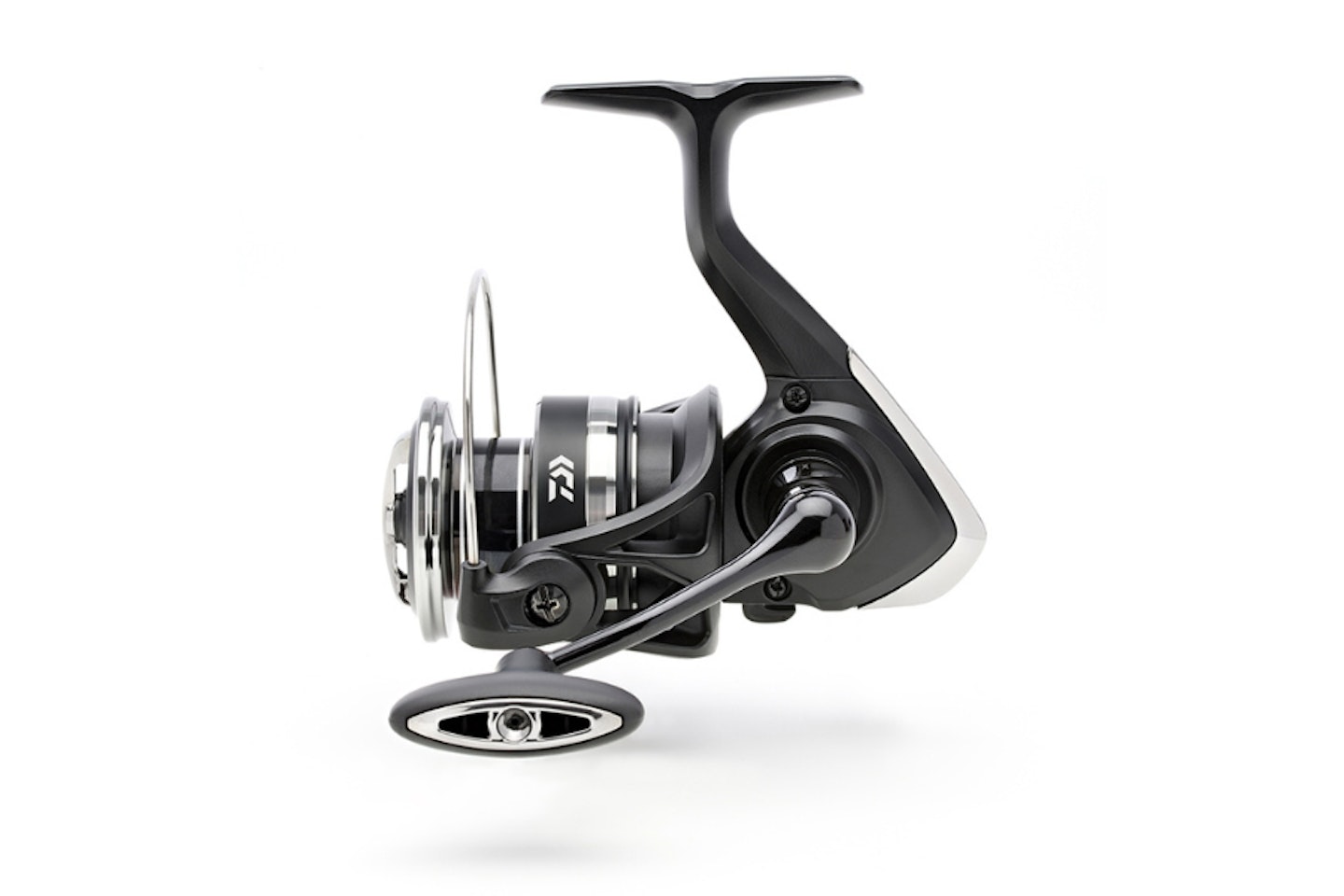
www.total-fishing-tackle.com
The Daiwa 25RZ reels are set to be known for their excellent value and versatility, making them suitable for a variety of fishing techniques. These reels cater to different preferences, including float fishing, feeder fishing, and lure fishing. The 25RZ series is available in three sizes: 2500, 3000, and 4000.
The 2500 size is particularly well-suited, and one of the best float fishing reels for beginners, as well as light lure fishing, making it a great option for those who favour finesse over power. On the other hand, the 3000 and 4000 sizes are designed for feeder fishing and medium to heavy lure fishing, providing the strength and performance needed for more demanding conditions. One of the standout features of these reels is the infinite anti-reverse system, which effectively eliminates any backplay in the handle.
The 25RZ reels sport a slim metal reel handle that ensures a comfortable grip for the user. The 2500 model features an I-shaped grip, while the 3000 and 4000 models are designed with a T-shaped grip, catering to different preferences in handling.
Pros
- Brilliant beginner reel
- Simple, robust and reliable
Cons
- No spare spool
Best fishing reels under £75
Okuma Custom Black CB-80 Reel exudes both style and substance, its matte back finish is undeniably sleek. Designed to tackle specimen carp it’s aesthetic and features set it amongst some of the best out there.
Built to last, supplied with a aluminium spool the reel incorporates a weighted wooden handle that is both comfortable and offers that old school look. Pair it with a cork handled rod for a traditional, timeless look.
It's not all about looks with the Okuma Custom Black CB-80 Reel, it also has impressive features but its stand out attributes, are its performance, power, smoothness and durability make it an excellent choice for budget minded anglers or those just starting out on their carp fishing journey.
Pros
- Durable, manufactured using hard wearing materials
- Stylish, the matte black style make it stand out.
Cons
- Not the lightest reel so may not be a good choice if seeking a lightweight set up
I found the Daiwa Ninja BR LT performed exactly as required. The freespool was easy to set and smooth, with just a tweak of the handle required to engage the standard drag. It might be a little bulkier than a standard Ninja, due to the extra gearing required, but this was hardly noticeable, even on an 11ft Ninja rod.
Smooth, powerful and easy on the eye, with Daiwa’s renowned reliability, it ticks all the boxes for a mid-priced reel.Although line clips tend to be used less often on freespool reels, since they need to be taken on or off all the time to use the freespool properly, I still would have preferred it to have the same high-impact line clip seen on top-end Daiwa models.
If used with care, though, I can’t see the clip on this reel giving you any issues.This is a belting reel that almost any angler would no doubt find a use for, whether it be the 4000 for general use or the slightly bigger 5000 model for heavier lines and bigger rods. Great looks and powerful in function, it’s the Swiss Army knife of reels.
You can read our full review of the Daiwa Ninja BR LT Reel here...
Pros
- Freespool option reduces the chances of rods being dragged in
- Perfect reel for specimen fish
Cons
- Is a little chunky for lighter match rods
Best fishing reels under £100
Whether you're hauling carp on the method or punching a feeder across a river, the Preston Magnitude doesn’t flinch. This is a reel designed to cater for the demands of both float and feeder fishing on naturals or commercials.
The first thing you’ll notice is how compact the body is. It’s not bulky or heavy, but inside, it houses a gearing system that perform. That oversized spool and worm drive setup give you super slow oscillation, giving excellent line lay and suppressing line twist. There’s real winding power too, which you'll appreciate when you’re repeatedly chucking feeders or winding in big fish on heavy gear.
But don’t pigeonhole this reel to just commercial carping, it just as effective for running water tactics or distance feeder work on naturals. It’ll handle mono or braid with no complaints, and it’s as at home swinging in roach on a cold river as it is bullying summer carp in a match.
The dual line clips is a unique feature, so swapping between lines or ranges is quick and reliable. The CNC-machined aluminium spool looks and feels solid. The soft-touch single handle keeps things comfortable, there’s even a spare spool. Available in 320, 420 and 520 sizes.
Pros
- Super slow oscillation creates perfect line lay.
- Plenty of power in reserve.
Cons
- Out of place, away from commercial venues.
Best fishing reels under £150
Best Rear Drag Fishing Reel
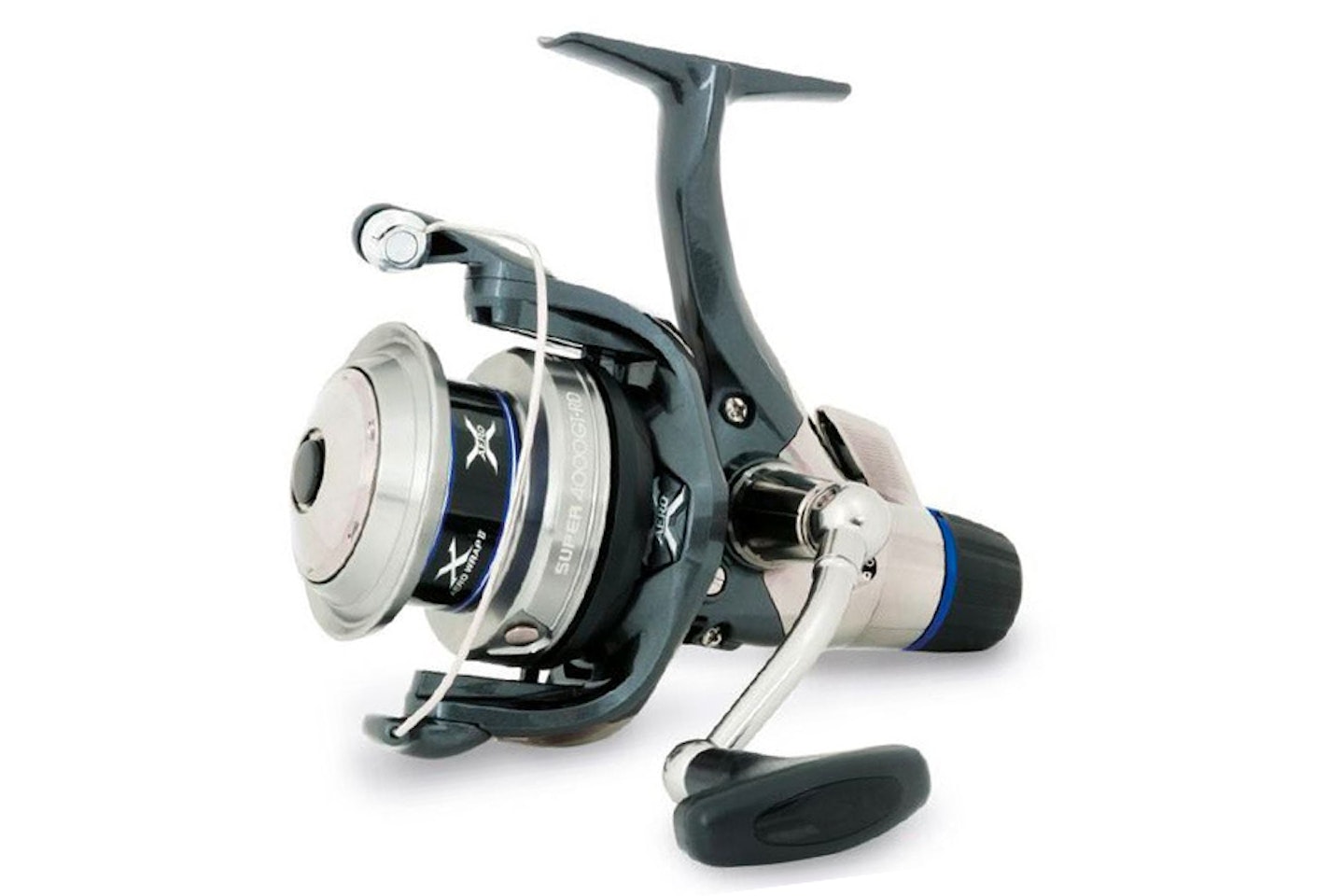
www.ebay.co.uk
The Shimano Super GT RD is a rare rear drag reel, packing a little more bulk and weight, but with the advantage of reduced cost and Fightin' Drag – a lever to adjust the drag during a fight or to use the reel as a freespool without losing your initial clutch setting.
A huge amount of winding power and updated with an ARC spool and Aero Wrap 2, the chance of frap-ups is reduced, and line lay improved.
Pros
- Quality fighting drag.
- Fantastic line lay.
Cons
- A little heavier than other reels of this size.
Loved by long-range specialists, the bull-nosed spool offers little resistance on the cast, takes fine or strong lines, and has bags of cranking power. Featuring a line clip, super-slow oscillation and a high-speed drag, the Shimano Ultegra ultra-shallow spool holds 200m of 0.20mm line.
Pros
- Superb line lay.
- Immense cranking power.
Cons
- A dual-line clip would have been a bonus.
Best fishing reels under £300
The Daiwa Tournament Feeder 25QD design is full of little tweaks and improvements over the other Daiwa distance reels, with its dual HIP line clips, one-touch folding handle and fully furnished spare spool but, most notably, Magseal! This is top-end technology uses a magnetic oil developed by NASA that fully seals and lubricates the reel, protecting it from water ingress and impurities.
In simple terms, Magsealed reels run smoother for longer than reels with basic rubber seals.
In use, it was everything I thought it would be, and then more! It felt very familiar, thanks to my extensive use of its predecessor, yet not only had its features been enhanced, but so had its looks. With its exquisite red detailing, it doesn’t just perform like the best distance feeder reel in the world, it looks the part too!
The modestly-named LC Long Cast 25mm spool is optimally sized for the longest of friction-free casts but, more than that, the lip is created to control rather than restrict the flow of line, leading to a smoother transition through the guides, greater distances and, ultimately, fewer frap-ups.
Despite a very strong head wind, no matter how hard I cast, my 40g Method feeder hit its 70m target without a problem.It’s very rare with fishing tackle that extra expenditure leads directly to improved results, but on venues where metres matter, this is one of them.Now, I fully understand that £400 is well beyond the budget of many anglers, but if you want the very best reel possible for casting long distances, look no further – this is it!
Pros
- Exceptional build quality
- Supplied with 2 spare spools
Cons
- Primarily designed for match anglers, may not be the best choice for other anglers
14.
Daiwa 24 TDR QD
Daiwa 24 TDR QD is more than just a reel, it’s an iconic beacon of Daiwa’s relentless drive to engineering excellence. The TDR has a legacy going back to 2006 and is consider the pinnacle of match and feeder fishing.
I personally, am a huge fan of these reels and have owned, used and abused every model and generation of this reel. From the 2508 is one of the best float fishing reels. also very capable for pellet waggler fishing, the 3012 is my go-to reel for all larger waggler, feeder and method feeder work and finally the 4012 makes an appearance for larger feeder work up to 50m. Any further than that I use its big brother the TDR distance.
Throw in the high impact line clip and my personal favourite feature the QD quick drag system and you have a recipe for success. I can honestly say in the years I have used TDR reels; they have never let me down.
If you prefer to rely on the drag system and don’t backwind, once you have the drag dialled in, breakages become a thing of the past as the accuracy of the ‘QD’ drag system gives line smoothly as and when its critical, virtually eradicating breakages and significantly reducing hook pulls under the rod tip, helping you to land every fish you hook.
If you're in the market for a capable, high performance reel that looks as good as it performs then you need look no further than the Daiwa 24 TDR, it's pedigree speaks for itself.
SEE WHAT JONATHAN THINKS OF THE DAIWA 24 TDR IN HIS TRIED AND TESTED REVIEW.
Pros
- Advanced features, Quick Drag, High Impact line clip (HIP) and spare spool
- Iconic blue livery
Cons
- Because of its size and design may not be the best choice for light or finesse fishing
Best fishing reels if money is no object...
15.
Daiwa 22 Exist
Best Fishing Reel Money Can Buy

www.total-fishing-tackle.com
This reel is the best money can buy! The Exist's one-piece monocoque design reduces body size while increasing gearing capacity.
All Daiwa's high-level technology is here, while Magsealed construction ensures a long and maintenance-free life. The drag is smoother than we thought possible, and the winding is taken care of via no fewer than 12 ball-bearings.
In five sizes, plus a High Gear option, Exist is ready for any battle - saltwater, freshwater, large or small.
Pros
- Incredible smoothness.
- Hard as nails.
Cons
- In a price range only suited to high-end match anglers.
Best centrepin reels
Still a firm favourite with the traditionalist, and with no bail-arm or gearing to complicate things, buy a centrepin, and you'll have direct control over line release and retrieval. A smooth-running mechanism is needed to release line at a steady speed for trotting.
16.
Okuma Sheffield
Best Value Centrepin Reel
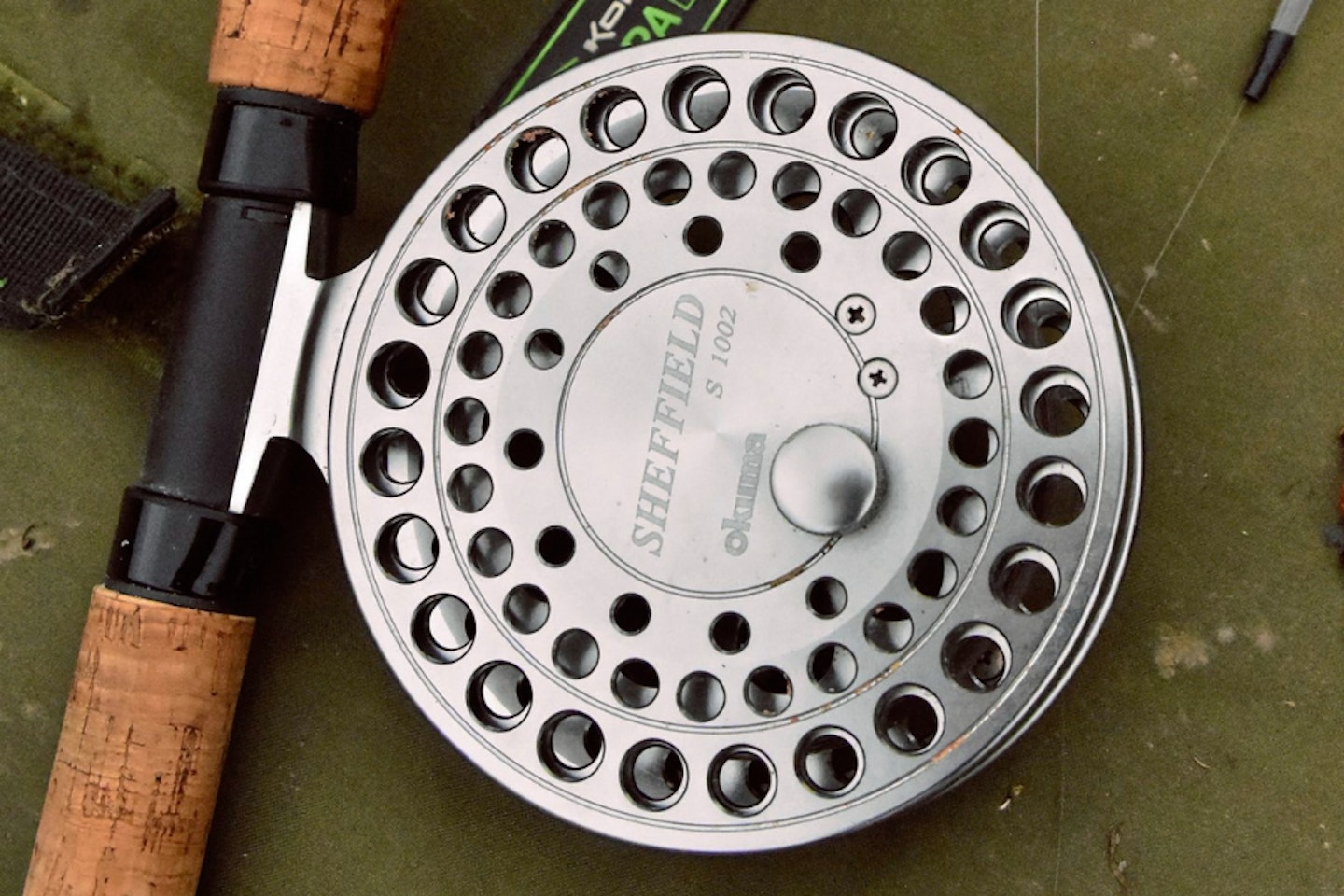
www.ebay.co.uk
This 4.5ins diameter Okuma Sheffield reel in machine-cut aluminium with two German HPB stainless ball-bearings gives virtually friction-free running perfect for smoothly trotting a float on the river. The ideal choice for those wanting a top product without the cost getting out of hand.
Perfect for the traditionalist that prefers a more old school approach to float fishing rather than using a modern fixed spool reel.
Pros
- Looks amazing on the rod.
- Friction-free performance.
Cons
- Needs balancing with the right rod for weight.
What to look for in a fishing reel
If you are fishing with multiple rods, then a freespool switch or dial is a must. This temporarily loosens the drag right off, but most commonly, it automatically switches back off when you turn the reel handle.
Big pit reels hold loads of line for long-distance casts, while mini big pit reels are great for general carp or long-range feeder fishing. If you want to use your reel for multiple tasks, a spare spool is a must.
Tiny 1000 sizes are perfect for small lure fishing and spinning reels. But if big predators are your main focus, you will need to look for something a lot larger to chuck heavy lures or deadbaits for pike. It's not always the case, but it is likely, the bigger the fish or venue, the bigger the reel required.
The more you spend on a reel, the lighter it will be and the smoother the drag you will get. You will also expect better line lay, which aids casting range.
Glossary
Drag/clutch: An adjustable tensioning system that allows a hard-fighting fish to pull an additional line from the reel instead of breaking the line.
Freespool: Similar to a clutch but working at far lower tensions, the Freespool will allow a running fish to take line, preventing a rod on a rest from being pulled in. Once the rod is picked up and the reel handle turned, it will disengage, putting the reel back into 'fish playing' mode with the drag working as normal.
Spool: The cylinder at the front of a reel which holds the line.
Big pit: A reel with a long spool designed for extreme long-range casting by reducing the resistance of the line.
Frap up: A tangle during a cast where a ball of line catches in the guides of the rod, typically causing a crack off.
Crack off: Named after the loud cracking sound made as line breaks during a cast.
Line clip: A small clip on the spool that line can be placed under, stopping it from leaving the reel. Originally designed to stop lines from falling off in transit, they are now commonly used to repeatedly cast a set distance.
Line Twist: Casting, retrieving and using the freespool and clutch adds twist to your line, which can weaken it and reduces casting distance. In extreme cases, the line will bounce off the spool and ball up as it untwists. More expensive reels incorporate various technologies to minimise line twists.
Frequently asked questions
What size reel should I use for feeder fishing?
A 3000 size suits rods of 10ft or less, whilst a 5000 or bigger will be needed on 13ft or 14ft rods designed for long distances. A 4000, however, is a great 'go-to' size for all general mid-range feeder fishing. Be aware that sizes vary between manufacturers, so take a look or ask in a tackle shop before you buy.
What size reel should I use for waggler fishing?
4000 is the perfect size with most manufacturers' reels, but a smaller 3000 might match lighter rods and finer lines in some models.
How much backing line should I use?
A cheap and thick backing line is often needed to bulk out a deep spool before adding the line you intend to fish with. Once the backing line and your fishing line has been added, the level of line should sit just beneath the lip of spool. Too little line on a reel reduces casting distance, whilst over filling will lead to tangles and frap ups. A shallow spool might not need any backing line.
How much line do I need on top of my backing line?
100m is plenty for most situations and allows you to discard some should it become damaged. 150m or more is the norm for long-range feeder fishing. You should use a backing line too if your chosen line doesn't fill the spool.
What's the advantage of a centrepin?
You get total control of the speed of the line leaving a centrepin, allowing you to perfectly match the speed your float travels down the river, keeping you in total control. With no bail arm or clutch, casting distance is extremely limited and playing fast-moving, hard-fighting fish is tricky. This limits their use to more specialist close-range situations.
How can I clean my reel?
A damp cloth and warm water should be enough. Although reels are designed to be as watertight as possible, keep their exposure minimal, as any that gets inside will rinse lubricants from the reel. An old toothbrush can be useful too.
Can I use one reel for multiple tactics?
Yes, as long as the size is suitable, as too big a reel for waggler fishing, for example, makes a lightweight rod feel clumsy, whilst too small a reel for feeder fishing will restrict casting distance and reduce the winding power needed to retrieve heavy feeders. This is where spare spools become useful. On a 4000-sized reel, one could be loaded with 3lb line for waggler fishing, whilst a second could be loaded with 6lb for the feeder.
How should I load a reel with line?
There are three methods.
1 Ask a second person to place a pencil through the hole of the spool and use a cloth to add friction to the spool to stop it spinning out of control whilst you wind it onto the reel.
2 Place the spool in a bucket of water and allow it to rotate whilst you wind it on. Beware, as getting it wrong will cause line twist.
3 Use a dedicated line loader.
Author Mark Sawyer holds the position of Tackle Editor at Angling Times, boasting more than thirty years of experience working within different fields of the angling industry.







